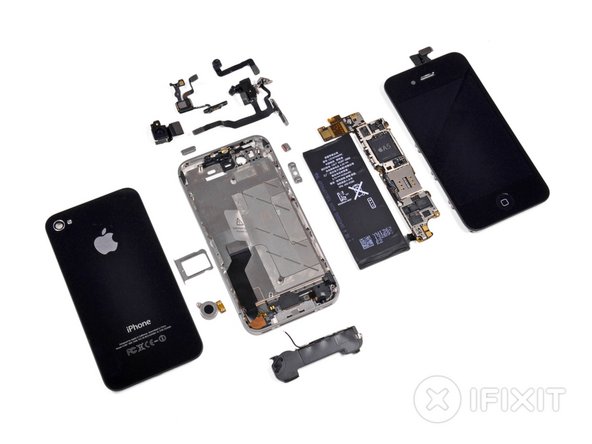
We sent our henchmen around the world to track down the elusive iPhone 4S, and they found it. With the help of an iFixit user hailing from Germany, Markus Weiher, the iFixit team successfully dismantled Apple’s latest creation. Not even Siri’s incessant urgings and warnings were enough to deter our team from dissecting it!
If you’re one of the billions who’s pre-ordered this phone and you want to peek inside, follow our teardown guide and see for yourself. All you need is a spudger, a Phillips #00 screwdriver, a Pentalobe screwdriver, and the will to explore. Leave your warranty at the door — you won’t need it where you’re going.
Opening the 4S was no more (nor less) challenging than the iPhone 4. We’re always pleased to find a limited amount of adhesive in our patients, and easily removable rear panels are always a plus. However, the same pesky proprietary screws are present, and it’s never a joy to encounter fused (read: expensive to replace) displays. All things considered, the new iPhone 4S isn’t any easier or harder to repair than last year’s model, so it gets the same 6 out of 10 repair score as the previous-gen iPhone 4.
Teardown highlights:
- Pentalobe screws, again? We were hoping there would be something new to keep us out this year, but it seems that our familiar five-sided friends have not moved far from their home at the bottom of the iPhone 4S. A couple quick turns with our 5-Point Pentalobe screwdriver and out they come!
- Look closely… closer… there it is: an extra .05 watt-hours in the battery over the iPhone 4! That small change gives you an extra hour of talk time on 3G, but 100 hours less standby time. Go figure.
- In true iFixit fashion, we removed the EMI shields for your viewing pleasure. The logic board now bares its electronic soul:
- Apple A5 dual-core processor with 512 MB RAM
- Toshiba THGVX1G7D2GLA08 16 GB NAND flash memory
- Qualcomm MDM6610 baseband chipset
- Qualcomm PM8028 power management IC
- Qualcomm RTR8605 Multi-band/mode RF transceiver
- Murata SW SS1830010. We suspect that this package contains the Broadcom chip that reportedly provides Wi-Fi/Bluetooth connectivity, just like in some of the past teardowns.
- Skyworks 77464-20 load-insensitive power amplifier (LIPA) module developed for WCDMA applications
- Avago ACPM-7181 power amplifier
- TriQuint TQM9M9030 multi-mode quad-band power amplifier module
- TriQuint TQM66052 (possibly a PA-duplexer module)
- Mysterious Apple chip with markings 338S0987 B0FL1129 SGP
- Oh hey, what’s this? According to Chipworks, our German iPhone has Samsung DDR2 RAM (K3P markings on the A5 processor), while our Australian iPhone 4S contains Elpida DDR2 RAM (B40 markings on the A5 processor)!
- We noted that the Verizon and AT&T iPhone 4’s display assemblies had different mounting tab locations. While most of the 4S has resembled the CDMA iPhone 4, the display assembly appears to be the same as the one found in the GSM version.
- It appears that Apple elected to go with the linear oscillating vibrator that we found in the Verizon iPhone 4, as opposed to the rotational electric motor with counterweight in the AT&T version. This vibrator motor is quieter, softer, and all-around less annoying than its counter-weighted predecessor.
- We noticed several white and red liquid indicator strips placed throughout the phone. So don’t let your friends pee on it! (No, seriously)
- Good news: not a single trace of any Cyberdyne Systems components were found… it seems for the time being our judgment day is not upon us.








0 Comments